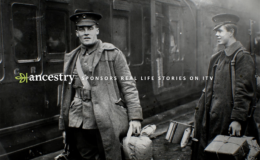
Genetics may have been a drag while you were at school, but DNA testing has gone on to establish itself as one of the most unexpected and interesting trends of the present day. A staggering number of people have turned to biology hoping to gain unique insight into their family history, with over 15 million people completing a DNA test by last November. Thinking about joining the pack? Here’s what you need to know.
What is an ancestry DNA test?
Most ancestry DNA tests use a process called microarray-based autosomal DNA testing to analyse your genes, and look out for specific characteristics which are associated with particular global populations. Your autosomal DNA is the collective name for the 22 pairs of chromosomes which don’t determine your biological sex. Amongst these chromosomes, scientists can examine variants in your genetic code called single-nucleotide polymorphisms (SNPs), which account for traits including skin colour, height, and hair texture. Certain variants tend to be most common in specific global populations—for example, afro-textured hair is associated with certain populations in Africa and other global descendents. These traits act as useful ancestry markers, so spotting particular variants can help scientists determine where your ancestors hailed from.
Some DNA testing companies will also use a technique called haplogroup testing. Maternal haplogroup testing examines the mitochondrial DNA (mtDNA) you inherit from your mother, while paternal haplogroup testing analyses the DNA inherited from your father (Y-DNA). Men and women can both undertake a maternal test, but only men are eligible for a paternal test, as this method focuses on the Y-chromosome passed down from father to son.
As well as estimating your origins from hundreds of regions around the world, ancestry DNA tests can also help you connect with family members you may not know exist, from a full sibling to a sixth cousin. Companies will look at the number of DNA segments shared between people in their database, and use the number of common segments to consider how two people are related..
Why are ancestry DNA tests so popular today?
The growing interest in our background and heritage has transformed the DNA testing market into a billion dollar industry, with researchers estimating that the sector will be worth $10.04 billion by 2022. Beverly Strassmann, a University of Michigan anthropologist, even claims that genealogy is America’s second-most popular hobby.
People have been working out their family trees for generations—it’s been suggested that the practice goes back to the hunter-gatherers of the Neolithic Period about 11,500 years ago—and now the public are able to learn more about their lineage with minimal money, time and effort. It would have cost thousands to take a DNA test when they first hit the market, but many companies now charge a fraction of the price. Home testing kits also mean there is no need to travel to a laboratory—all you have to do it post a spit sample or swab. Plus, while family trees once relied on testimonies from family members or time-consuming research, people feel more confident in results that have been compiled by experts in genetics.
Ancestry has also become a common part of conversation thanks to its increasing presence in modern popular culture. For example, actor Danny Dyer provided a 2018 British TV highlight when he learned he was a direct descendant of Edward III on BBC television show Who Do You Think You Are?. Liv and Steven Tyler learned they had African American roots when they were guests on TLC’s version of the same programme, while Oprah Winfrey took a DNA test as part of the PBS documentary series African American Lives. Elsewhere, Spotify has teamed up with AncestryDNA to create custom playlists for users of the DNA testing company, with music based on the locations associated with their genetic makeup.
The digital age means we can connect with people from other parts of the world more easily than ever before, through blogs, articles, and social media accounts. With different cultures so accessible, it’s never been easier to jet across the globe, so ancestry DNA tests could also provide a unique and appealing opportunity for adventure and enlightenment. If you learn you have genes deriving from an unexpected place, this gives you a personal incentive to visit the country in question and learn more about its (and your own) history and culture.
Where can I take an ancestry DNA test?
Ancestry DNA tests are available to order online, with over 50 mainstream companies offering the service. However, it is worth bearing in mind that DNA test results can often vary between providers, since each company uses its own specific database. Scientists determine the outcome of a test by comparing specific SNPs in the client’s DNA against those most commonly associated with certain global populations in their database. As each company is using its own system, it’s possible to receive different results from different services. Do your research, and opt for a provider with a large database comprised of users from as many different global populations as possible.
The largest comparison site for home DNA tests, DNA Testing Choice ranks MyHeritage as the best ancestry testing service on the market. It is one of the most affordable options out there and offers ethnicity analysis with the help of a globe to highlight the locations your DNA corresponds to. MyHeritage also provides a family finder feature, and is said to have “the largest international network of family trees”, making it a good choice for anyone looking to start their own diagram.
Similarly, AncestryDNA offers both of these services and contains the largest database, having obtained information from over 10 million people. It also matches DNA to over 350 worldwide regions, and if you sign up for AncestryDNA’s genealogical subscription service, you can access public records to help you to further explore your family’s history.
23andMe is another of the largest DNA testing companies, also equipped with its own family finder feature called DNA Relatives. As well as calculating your ancestry composition, it also offers a Neanderthal inheritance breakdown to show users how much Neanderthal DNA they have inherited. Though 23andMe doesn’t have the biggest database, the brand is attempting to extend this with its Global Genetics Project. This scheme offers testing kits to people who have four grandparents from one of over 50 countries that are not significantly represented in 23andMe’s records. They hope this project will improve their ability to provide detailed results for customers with non-European ancestry.














